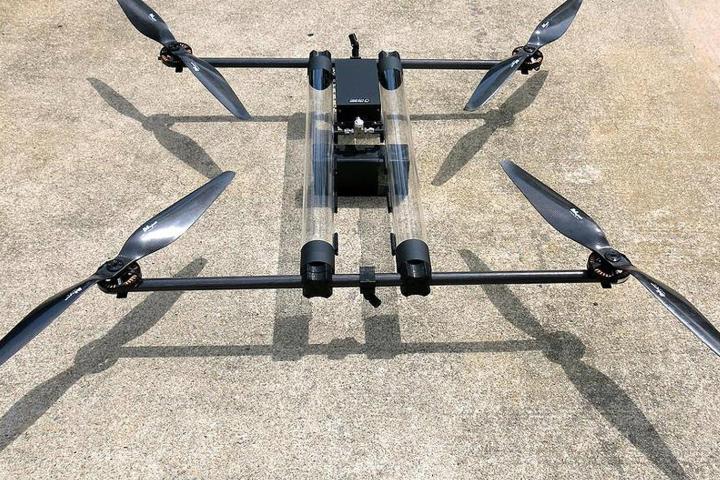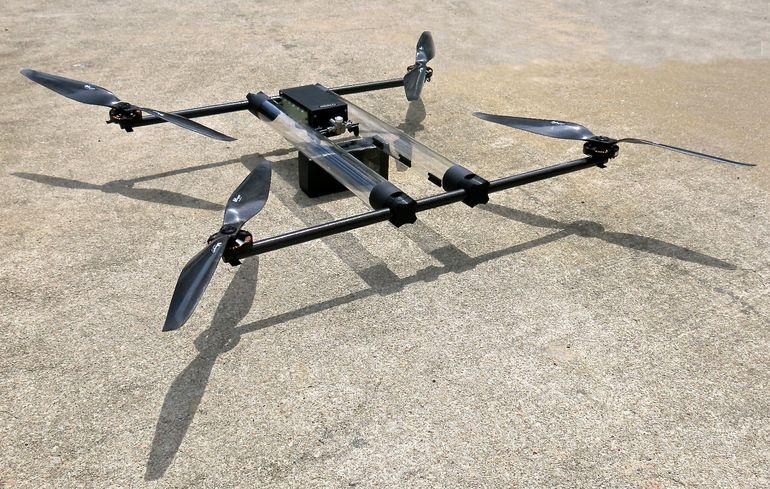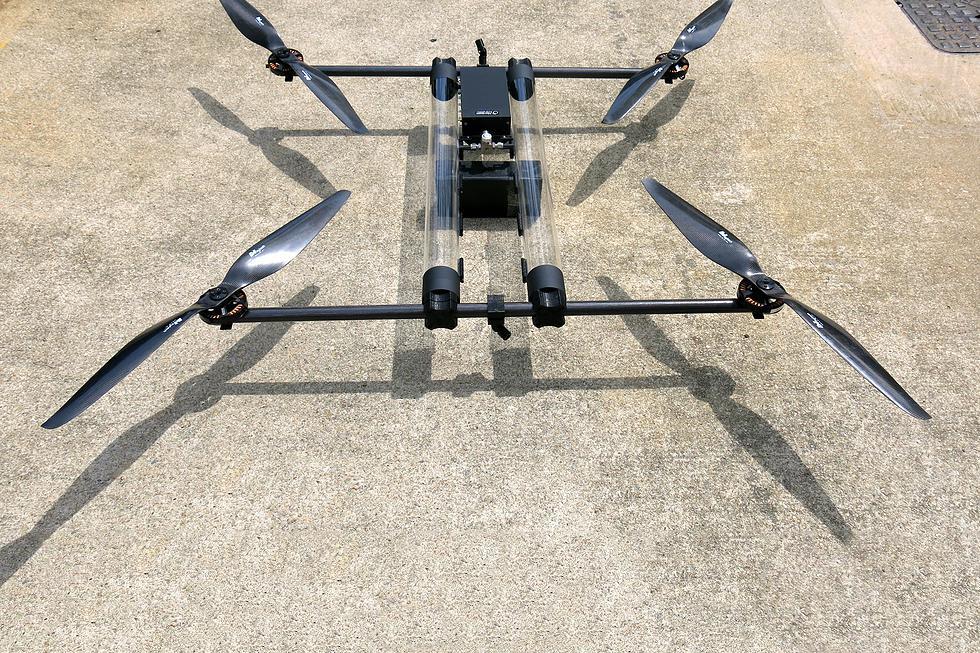
To remedy this problem, Horizon Unmanned Systems is taking a bold new approach — it’s doing away with batteries entirely. Instead of using the standard lithium-ion cells that most drones rely on for power, the Singapore-based company’s upcoming Hycopter drone uses hydrogen as its energy source.
In a clever design feature, the Hycopter stores 4.2 ounces of hydrogen gas at 5,076 psi inside the structural tubing of its hull – no separate gas canister is required. Horizon claims that with this lightweight design, the drone should be able to fly for about 2.5 hours while carrying a kilogram of cargo, or a whopping 4 hours while flying unloaded.
That might not sound like a particularly huge leap forward, but the difference between 20 minutes and four hours is pretty substantial. That much extra airtime would give drones the ability to fly drastically greater distances before needing to recharge, and would make drone-based delivery much more viable than it currently is.
But here’s the catch — Horizon hasn’t actually tested Hycopter yet. They’ve worked it all out on paper, and theoretically their system is capable of nonstop four-hour flight, but the company hasn’t actually built the first functional prototype yet. The UAV pictured above is, alas, merely a concept drone, and isn’t capable of flight. Horizon execs have said, though, that a working version is under development, and that Hycopter will undergo its first test flights later this year.
In the meantime, the company is currently taking pre-orders from interested parties to help raise money for further development.
Editors' Recommendations
- Watch this festive drone show fly straight into the record books
- The Skai is a multipurpose flying car powered by hydrogen fuel cells







